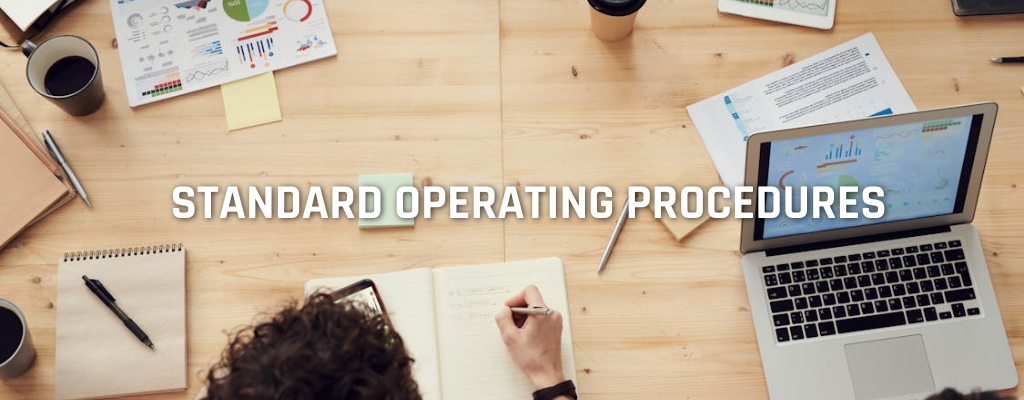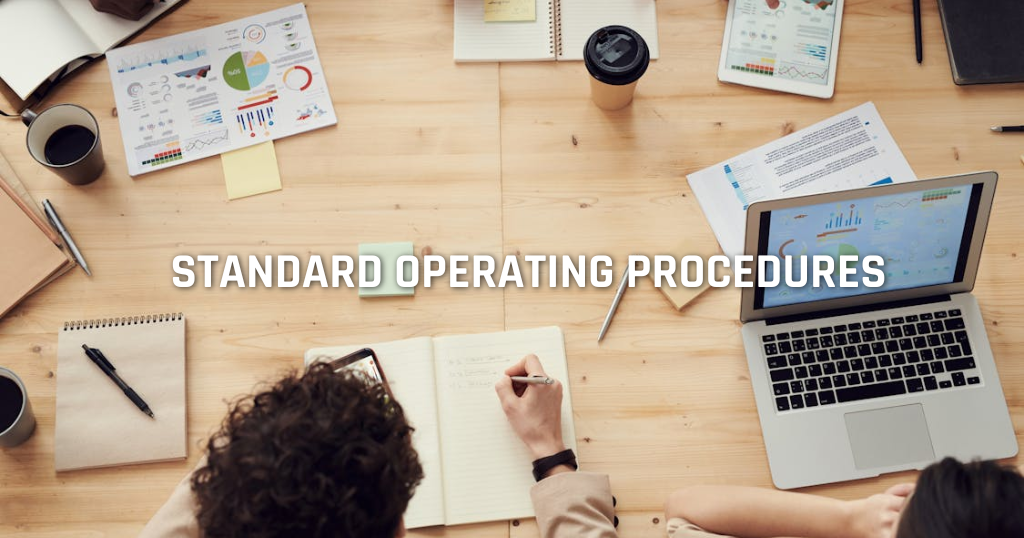What Are Standard Operating Procedures (SOPs)?
Standard Operating Procedures, commonly known as SOPs, are detailed, written instructions that guide employees through specific tasks or processes. They serve as a set of standardized guidelines that outline the steps required to perform a job safely, effectively and consistently. SOPs are important in establishing routine and ensuring that tasks are performed uniformly each time, minimizing variation and promoting quality control.
SOPs are integral across various industries, such as healthcare, manufacturing and of course, professional services. They help streamline operations, improve efficiency and ensure compliance with regulatory standards. For example, SOPs can assist professional service businesses in project management, client onboarding and data management. SOPs are particularly useful in industries where adherence to strict guidelines is necessary for safety, quality and legal compliance such as healthcare and manufacturing.
Why Are SOPs Important for Businesses?
Standard Operating Procedures (SOPs) are essential for businesses for several reasons:
- Consistency and Quality Control: SOPs ensure that tasks are completed consistently in the same manner each time, promoting uniform output and guaranteeing a standard quality of service or product.
- Efficiency: Clear guidelines help employees complete tasks more efficiently, minimizing delays and improving overall productivity.
- Training Tool: For new employees, SOPs act as a handy guidebook, reducing the learning curve by providing clear instructions on how tasks are performed, which boosts confidence and proficiency.
- Compliance and Regulation: In highly regulated industries, SOPs help companies adhere to legal or contractual obligations.
- Accountability: With a clear SOP, it’s easier to identify where errors or inefficiencies occur, enabling swifter corrections and improvements.
- Operational Continuity: SOPs ensure business operations can continue smoothly with minimal disruption in unforeseen absences, turnover, or emergencies.
- Risk Management: By standardizing procedures, SOPs help minimize errors and prevent accidents or incidents, thereby reducing risks.
- Improved Customer Satisfaction: Consistent and efficient processes lead to a better customer experience, enhancing satisfaction and loyalty.
- Support for Continuous Improvement: SOPs provide a foundation for evaluating current practices and improving continuously, helping the business adapt effectively.
For example, a consultancy firm might use SOPs to streamline its client onboarding process, ensuring that every step is handled consistently and efficiently. Similarly, a financial services firm may rely on SOPs to maintain compliance with financial regulations, reducing the risk of errors or fines. In addition, SOPs play a significant role in ensuring effective business process documentation and facilitating smooth change management across various organizational functions.
Key Components of a Standard Operating Procedure (SOPs)
An effective Standard Operating Procedure (SOP) comprises several important components that ensure clarity, consistency and ease of use. Each component serves a specific purpose in guiding employees through a task or process, minimizing confusion and improving overall operational efficiency. The key components of a well-structured SOP include:
| Component | Description |
|---|---|
| Title | Indicate what the procedure pertains to, helping users quickly understand its focus. |
| Objective/Purpose | Outline why the procedure exists and its goals, explaining its importance and relevance. |
| Scope | Provide details on where the SOP applies and where it does not, preventing misapplication. |
| Definitions | Provide explanations for terminology, acronyms or jargon to ensure clarity. |
| Responsibilities | Define who is responsible for each part of the procedure to ensure accountability. |
| Procedure | Offer a step-by-step guide on performing the task or process, with visuals if necessary. |
| Important Reminders | Highlight key steps, important deadlines or compliance requirements to ensure proper execution. |
| Associated Documentation | List any related SOPs, training materials, templates or other documents that support the procedure. |
| Review and Approval Signatures | Document the review and approval by relevant authorities, maintaining accountability. |
| Approval and Revision History | Include a history of revisions, approvals and updates to keep the SOP current and accurate. |
By including these components, professional service firms like consulting, law or financial services can create clear and concise SOPs that align with their operational standards and reduce risks associated with ambiguity or lack of guidance. A well-structured SOP should be comprehensive yet simple enough for any team member to follow, enhancing efficiency and consistency across the organization.
How to Create Effective Standard Operating Procedures (SOPs): A Step-by-Step Guide with Best Practices
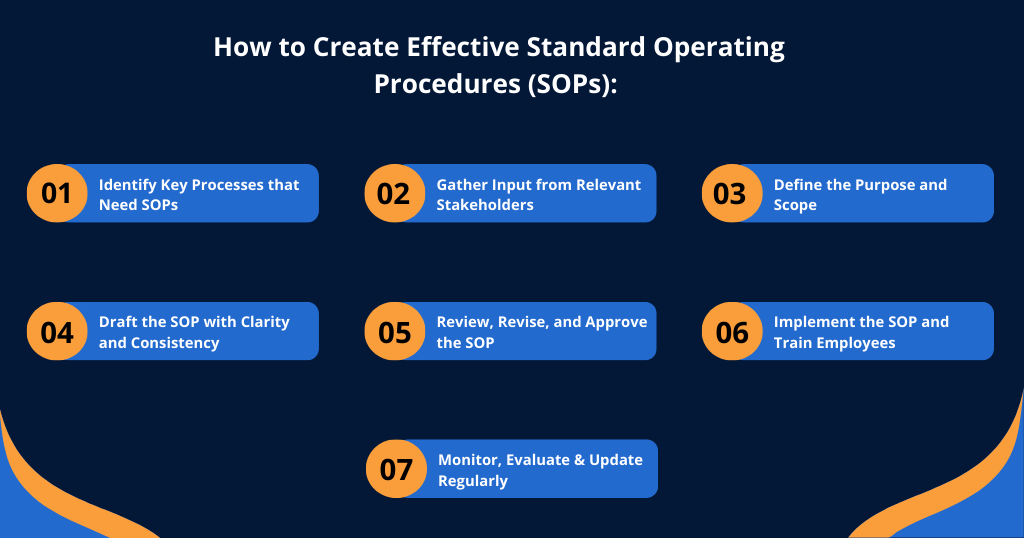
Creating effective Standard Operating Procedures (SOPs) requires a systematic approach to ensure they are clear, practical and effective. Here is a step-by-step guide, including best practices to help you develop SOPs that improve efficiency and maintain high standards:
Identify Key Processes that Need SOPs
Begin by identifying the key processes within your organization that require formal documentation. These are typically repetitive, complex, or essential to your business’s core functions. For professional service firms such as consulting or legal practices, this could include client onboarding, project management and PMO, compliance checks or data management processes.
- Best Practice: Focus on high-impact areas where consistency is significant. Avoid creating SOPs for every minor task, prioritize those significantly affecting operations or compliance.
- Challenge: Establishing which processes are vital and require SOPs without over-documenting or neglecting essential areas.
- Solution: Conduct a thorough analysis of current processes and involve key stakeholders to identify those that have the most significant impact on operations or compliance.
Gather Input from Relevant Stakeholders
Involve team members who regularly perform or oversee the tasks to ensure the SOPs are practical and reflect real-world challenges. Their input is essential for capturing the nuances of each process and identifying potential obstacles.
- Best Practice: Involving stakeholders from the start promotes a sense of ownership and increases adherence to the SOPs. Avoid excluding key team members, which could result in impractical SOPs that don’t reflect actual workflows.
- Challenge: Employees may resist adopting new or updated SOPs due to a lack of understanding or fear of change.
- Solution: Involve employees early in the creation or revision process to increase participation and provide comprehensive training sessions to ease the transition.
Define the Purpose and Scope
Clearly articulate the purpose of the SOP and define its scope. Specify what the SOP will cover and what it won’t and outline its objectives. This ensures the document is focused and relevant to the intended audience.
- Best Practice: Be specific but flexible, outline the SOP’s focus while allowing room for exceptions or adjustments. Avoid being too rigid, which can hinder effective decision-making in unique situations.
- Challenge: Balancing standardization with flexibility is important to prevent stifling creativity or hindering responses to unique situations.
- Solution: Design SOPs with built-in flexibility, allowing employees to make judgment calls in specific scenarios while maintaining core standards.
Draft the SOP with Clarity and Consistency
Write the SOP concisely and logically. Use simple language to avoid ambiguity and ensure each step is easy to follow. Include all necessary details, such as required tools, responsible parties, and potential risks. Visual aids like flowcharts or checklists can improve comprehension.
- Best Practice: Keep it simple. Overcomplicating procedures can lead to confusion and errors. Use visual aids to make the content more accessible and engaging.
- Challenge: Employees may experience SOP fatigue if there are too many SOPs or if they are overly complex.
- Solution: Prioritize important SOPs and use digital tools or quick-reference guides for easy access and review.
Review, Revise, and Approve the SOP
Once drafted, the SOP should undergo a thorough review process. It should be reviewed by multiple stakeholders, including those who will use it and those who have managerial oversight. This helps ensure accuracy, clarity, and completeness.
- Best Practice: Regularly review and update SOPs to keep them current. Establish a feedback mechanism where employees can suggest improvements. Avoid letting SOPs become outdated, which can cause inefficiencies or compliance issues.
- Challenge: Overcoming complexity in large organizations where different departments may need help with uniform compliance.
- Solution: Use a tiered SOP system that includes both high-level procedures applicable to the entire organization and department-specific SOPs for unique needs.
Implement the SOP and Train Employees
Effectively communicate the new SOP to all employees who will use it. Provide training sessions to ensure they understand each step and its importance. This could involve workshops or online training modules customized to different teams in professional service settings.
- Best Practice: Ensure comprehensive training to prevent misinterpretation and inconsistent application. Provide easy access to SOPs and encourage a culture of continuous learning.
- Challenge: Ensuring all employees are adequately trained and understand the SOPs, especially in organizations with a high turnover rate.
- Solution: Develop a structured training program, including onboarding for new employees and refresher courses for existing staff, to maintain a high level of compliance.
Monitor, Evaluate & Update Regularly
An SOP is a living document that should be periodically reviewed and updated to reflect changes in processes, technology or regulations. Establish a schedule for regular reviews (e.g., annually or semi-annually) and gather employee feedback to identify improvement areas.
- Best Practice: Document all revisions and changes to maintain a clear history. Use technology tools for version control and automation. Avoid neglecting updates, which can lead to outdated practices and risks.
- Challenge: Keeping up with frequent changes in processes or regulations can make it difficult to maintain up-to-date SOPs.
- Solution: Use digital tools to automate reminders and notifications about SOP reviews and updates and assign dedicated personnel or teams to manage SOP revisions.
By following these steps and integrating best practices throughout the process, professional service firms can create SOPs that standardize operations, improve quality, ensure compliance, and improve client satisfaction. The goal is to develop SOPs that are practical, accessible, and aligned with the organization’s strategic objectives.
Types of Standard Operating Procedures (SOPs) with Examples
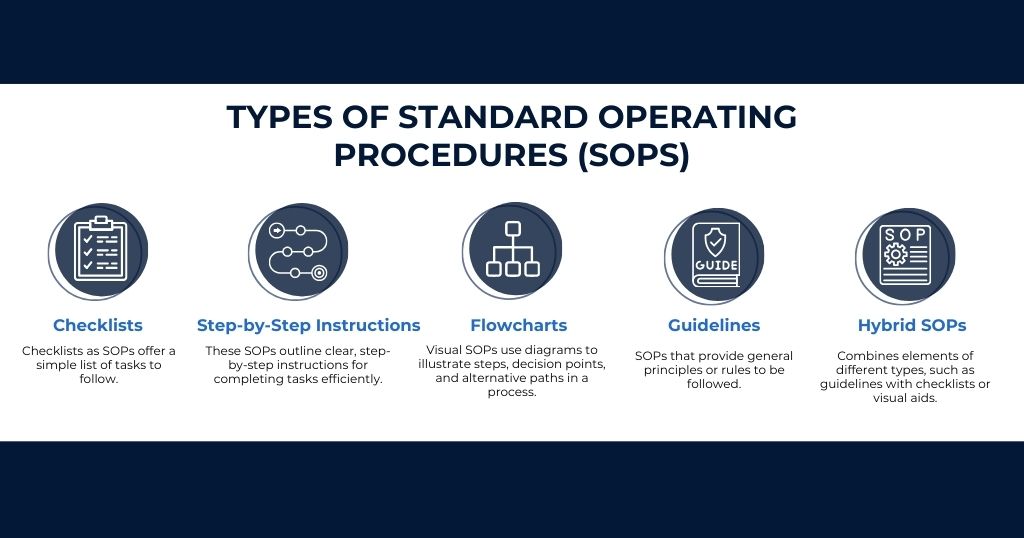
Understanding the different Standard Operating Procedures (SOPs) types can help organizations choose the most appropriate format for their needs. Here are the key types of SOPs and examples of how they are applied in professional service industries:
Checklists: SOPs in the form of checklists provide a straightforward list of steps or tasks to be completed.
- Example: A Compliance Checklist in a Financial Services Firm for verifying client documents against Anti-Money Laundering (AML) or Know Your Customer (KYC) regulations, detailing who is responsible for each step and required documentation.
Step-by-Step Instructions: These SOPs provide detailed, sequential steps to perform a task effectively.
- Example: A Client Onboarding SOP in a Consulting Firm that outlines each step, from initial contact and needs assessment to signing the service agreement and project handover, ensuring a consistent onboarding process.
Flowcharts: Visual SOPs that map out the steps in a process using diagrams, often to show decision points or alternative paths.
- Example: A Project Management SOP in an IT Service Company that uses a flowchart to depict stages of project development such as planning, execution, monitoring & closing, ensuring alignment and timely project delivery.
Guidelines: SOPs that provide general principles or rules to be followed.
- Example: Document Management Guidelines in a Law Firm that define how legal documents are created, reviewed, stored & retrieved, including naming conventions, version control and access permissions to ensure secure and efficient information management.
Hybrid SOPs: Combines elements of different types, such as guidelines with checklists or visual aids.
- Example: A Client Feedback Collection SOP in a Marketing Agency, combining guidelines on when and how to solicit feedback with a checklist of tools and platforms to use, ensuring consistent interaction and continuous improvement.
These types and examples illustrate how SOPs can be customized to meet specific operational needs across professional service industries. By adopting the right type of SOPs, organizations can achieve higher efficiency, compliance and better client experiences.
Digital Strategies and Tools for SOP Management and Compliance
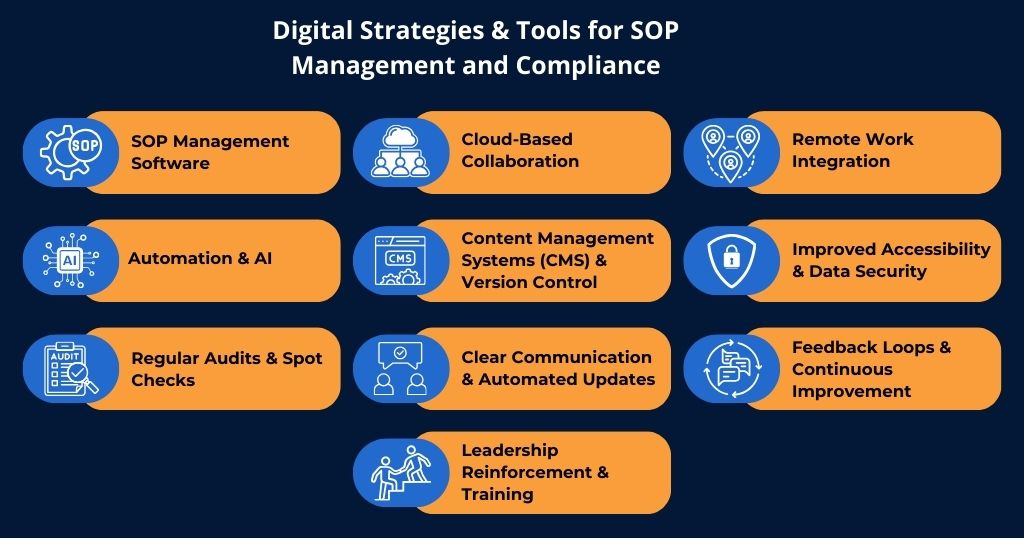
Managing Standard Operating Procedures (SOPs) effectively in today’s modern tech era requires leveraging the right tools and technologies. Digital platforms streamline the creation, maintenance and distribution of SOPs, improving accessibility, usability and compliance. Here are some key tools and strategies for managing SOPs and ensuring compliance:
- SOP Management Software: Tools like Process Street, SweetProcess, and Trainual provide comprehensive solutions for creating, organizing, and maintaining SOPs. They include features like version control, workflow automation, and employee training modules, ensuring SOPs are up-to-date and accessible to all team members.
- Cloud-Based Collaboration: Platforms like Google Workspace and Microsoft 365 enable real-time collaboration on SOPs, allowing multiple team members to draft, edit, and approve documents simultaneously. This collaborative approach ensures SOPs are comprehensive and reflect input from all relevant stakeholders.
- Remote Work Integration: Tools such as Slack, Zoom, and Microsoft Teams facilitate remote communication and ensure consistent SOP adherence. Organizations can use these platforms to share SOP updates, provide training, and answer questions in real-time, encouraging a culture of compliance even among dispersed teams.
- Automation and AI: Automation tools and AI can streamline SOP-related tasks, such as sending review reminders, generating reports and flagging non-compliance issues. AI-driven analytics provide insights into SOP effectiveness by tracking usage patterns, identifying bottlenecks and suggesting areas for improvement.
- Content Management Systems (CMS) and Version Control: CMS tools like SharePoint or Confluence serve as centralized repositories for all SOPs, while version control systems like Git or Subversion maintain a history of changes, ensuring compliance and accountability.
- Improved Accessibility and Data Security: Digital SOPs are easily accessible via mobile devices and computers, reducing errors by making it easier for employees to consult procedures when needed. Digital tools also provide security features like encryption and access controls to protect sensitive information.
- Regular Audits and Spot Checks: Implement routine audits and random spot checks to monitor adherence to SOPs. Use digital tools to automate compliance tracking, providing real-time insights into adherence rates and identifying areas for improvement.
- Clear Communication and Automated Updates: Use digital platforms to distribute the latest SOP versions and ensure employees acknowledge receipt and understanding of changes. Automated notifications and updates help prevent miscommunication and maintain compliance standards.
- Feedback Loops and Continuous Improvement: Create channels for employees to provide feedback on SOPs and refine procedures based on real-world challenges. Digital tools can facilitate continuous feedback and adaptation, cultivating a culture of improvement.
- Leadership Reinforcement and Training: Encourage leaders to model compliance behaviors and use digital tools for remote training sessions. Provide incentives for adherence and set clear consequences for non-compliance to reinforce the importance of SOPs.
By combining these digital tools and strategies, professional service firms can improve their SOP management, ensuring that procedures are not only created and maintained but also actively followed, leading to higher operational efficiency and regulatory compliance. For example, implementing an ERP for small businesses can help centralize SOP management, improve data security and enhance collaboration. Additionally, software selection becomes significant when choosing the right digital tools to support SOP management effectively.
Real-Life Applications and Success Stories of SOPs
Examining real-life case studies and success stories can provide valuable insights into the effective use of Standard Operating Procedures (SOPs) in professional service firms. These examples demonstrate how well-implemented SOPs can lead to improved efficiency, compliance, and client satisfaction:
Case Study 1: Streamlining Client Onboarding at a Consulting Firm
A mid-sized consulting firm faced inconsistent client onboarding processes across different teams, leading to delays and miscommunication. The firm developed a comprehensive SOP for client onboarding, including standardized initial contact steps, needs assessment, documentation, and internal communication. The new SOP reduced onboarding time by 30% and improved client satisfaction by ensuring a consistent experience for all new clients. The firm also integrated the SOP with its CRM system, which allowed automatic tracking and reminders, further enhancing process efficiency.
Case Study 2: Enhancing Compliance in a Financial Advisory Company
A financial advisory firm struggled to keep up with the rapidly changing regulatory environment, leading to occasional compliance lapses. The firm created detailed SOPs for compliance checks, document verification, and client communication, aligning them with the latest regulatory requirements. Regular training sessions ensured all employees were familiar with the SOPs. As a result, the firm achieved a 100% compliance rate during the next audit and avoided potential fines or penalties, significantly enhancing its reputation with clients and regulatory bodies.
Case Study 3: Improving Project Management at an IT Services Company
An IT services company was experiencing delays in project delivery due to inconsistent project management practices among different teams. The company implemented SOPs that outlined standard practices for project initiation, planning, execution, monitoring, and closing. These SOPs included detailed timelines, roles and responsibilities, risk management practices, and quality control measures. By standardizing project management practices, the company reduced project overruns by 40% and improved client satisfaction through more timely and predictable project outcomes.
Case Study 4: Driving Operational Efficiency in a Legal Firm
A legal firm dealing with a high volume of cases found that document management was a significant bottleneck, leading to delays and increased costs. The firm developed an SOP for document management that included document creation, review, storage, and retrieval guidelines. By digitizing documents and utilizing a centralized document management system, the firm reduced document retrieval time by 50% and decreased storage costs by 20%. This streamlined operations and allowed lawyers to focus more on client work, boosting billable hours and revenue.
At Haile Solutions, we specialize in helping professional service firms increase chargeability and billability, eliminate inefficiencies and implement effective SOPs that drive operational excellence. This firms can achieve measurable improvements in their operations by customizing SOPs to address specific challenges and integrating them with digital tools.
Conclusion: The Role of SOPs in Professional Service Firms
Standard Operating Procedures (SOPs) are essential for professional service firms, providing a structured framework that ensures consistency, compliance and operational efficiency. By standardizing processes, defining roles and minimizing errors, SOPs improve service quality and creates a culture of continuous improvement.
In the current technological era, leveraging technology for SOP management enables real-time updates, automation, and broader accessibility, making SOPs more dynamic and effective. Regular reviews and collaboration with employees are important to maintaining relevant and practical SOPs.
Ultimately, well-implemented SOPs help firms manage complex regulations, improve client satisfaction and build trust. By prioritizing effective SOP management, professional service firms can achieve greater operational excellence and long-term success.
Frequently Asked Questions
What is the primary purpose of a Standard Operating Procedure (SOP)?
The primary purpose of an SOP is to provide clear, step-by-step instructions on how to perform a specific task or process consistently. SOPs help ensure quality control & compliance with regulations and improve training, efficiency and accountability within an organization.
How often should Standard Operating Procedures be reviewed and updated?
To ensure they remain relevant and effective, SOPs should be reviewed regularly, at least once a year. However, they may need to be updated more frequently if processes, regulations, technology, or organizational structure change.
Can SOPs be adapted for remote teams and digital workflows?
Yes, SOPs can and should be adapted for remote teams using digital tools such as collaboration software, cloud-based document management systems, and virtual training sessions. This ensures that all team members can access up-to-date procedures regardless of location.
Who is responsible for creating and maintaining SOPs within a business?
Typically, SOPs are created and maintained by team leaders, department managers, or process owners who deeply understand the specific tasks. It is important to involve employees who perform the tasks regularly to ensure that SOPs are accurate and practical.
What is the difference between SOP and POS?
SOP (Standard Operating Procedure) is a set of instructions for completing specific tasks consistently across an organization. In contrast, POS (Point of Sale) refers to a system used in retail to manage sales transactions, inventory, and customer data. While SOPs standardize processes, POS systems handle sales operations.
What is the difference between a Work Instruction and an SOP?
A Standard Operating Procedure (SOP) outlines the overall process for completing a task, while a Work Instruction provides detailed, step-by-step directions for specific tasks within that process. SOPs offer a broad overview, whereas work instructions focus on precise actions.

